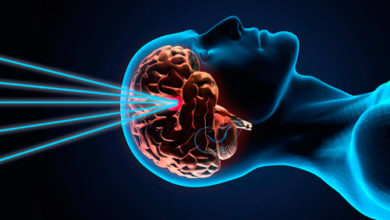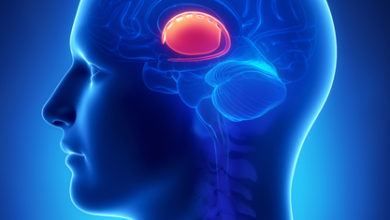Pituitary adenoma of the brain
The content of the article
Pituitary adenoma of the brain, what is it?
This disease is quite difficult to identify, and it is not very easy to diagnose. There are certain risk factors that may indicate the likelihood of the disease occurring. This may include the following:
- various infectious processes that occur in the nervous system;
- skull injuries;
- the negative impact of certain processes that occurs on the fetus during pregnancy.
Statistics show that this tumor, which is localized in the intracranial region, accounts for about 15% of all brain tumors.
Diagnosis of such tumors occurs with almost the same frequency, regardless of the patient’s gender. As for the age factor, the disease is most often diagnosed in patients aged 30 to 40 years. Before we consider in more detail the question of what a pituitary adenoma of the brain is, it is necessary to understand the very concept of “pituitary gland” and what it is. The pituitary gland is located in the area of the fossa of the sella turcica and consists of two lobes - anterior and posterior. Each lobe produces a special complex of hormones, and their deficiency or excess can cause serious mutations in the body.
The symptoms of this disease differ in a whole range of manifestations, and the symptoms themselves directly depend on the characteristics of the tumor.
When there is an abnormal proliferation of pituitary cells, a tumor forms in the anterior or posterior part, resulting in hormonal imbalances. In some cases, the growth of meningiomas . Less commonly, the gland is affected by malignant tumors that are located in other areas of the brain.
Head adenoma and its types
Adenomas are classified according to the following criteria.
- By size: there are microadenomas , the size of which is no more than 2 cm, macroadenomas up to 4 cm, as well as giant adenomas.
- By localization in relation to the sella turcica: endosellar adenomas develop along the sella turcica, endoinfrasellar adenomas grow downward, and endosuprasellar adenomas grow upward from the sella turcica and far beyond it.
- According to the production of hormones: there are secreting and non-secreting adenomas. The former produce hormones, while the latter do not, which is why they are classified as safer.
- According to the hormone produced: there are gonadotropinomas, prolactinomas and others.
- According to histology: there are basophilic, chromophobic, acidophilic and cystic. The latter option is distinguished by the presence of fluid that is contained inside the neoplasms.
Adenoma is most often discovered as a result of MRI or CT , which were prescribed to the patient to detect completely different diseases. It is worth noting that the presence of a pituitary adenoma is not always a reason for prompt surgical removal or any other intervention by a specialist. For example, microadenomas that do not produce hormones are completely safe for the patient. In this case, you only need to undergo an examination, which involves a computed tomography scan once every 2 years.
As for an adenoma that produces hormones, mandatory treatment is necessary, since otherwise the following diseases may occur:
- gigantism or acromegaly (enlargement of individual organs). The first defect most often appears in children, and the second in adults;
- enlargement of genital organs;
- impotence;
- infertility;
- diabetes insipidus.
It is worth noting that in some cases the manifestation of adenoma in men and women may be different. However, the symptoms can vary greatly.
The most dangerous adenomas for humans are those that grow into the meninges, resulting in meningomas and thinning of the sella turcica. Of course, a pituitary adenoma of the brain, the symptoms of which may also differ depending on the gender of the patient, is very dangerous. In rare cases, benign neoplasms can develop into malignant ones.
Cause of adenomas
Statistics show that 10% of the entire population has a pituitary adenoma. Most often, adenoma occurs in patients aged 30 to 40 years, but there is no exact data on who is more susceptible to the disease. Most experts are confident that the main causes of pituitary adenoma are the following:
- high level of background radiation;
- infectious diseases of the meninges and the brain itself;
- closed and open head injuries;
- active and prolonged exposure to chemicals and other toxic substances on the body.
In any case, the exact reasons that provoke the occurrence of this disease have not been identified to date.
Symptoms
Neoplasms that produce hormones will provoke more active work of the affected organ, so the symptoms will be specific to this organ. The most common type is prolactinoma (every second case of pituitary adenoma). It is mainly detected in cases of suspected infertility, lack of orgasm, milk production not even at the time of feeding the child, and also with enlarged mammary glands in men.
Somatotropinoma causes an enlargement of individual organs of the patient: fingers, nose, lips, feet, etc. If the tumor is located in the neurohypophysis, then diabetes insipidus mainly occurs due to the excessive removal of fluid from the body.
If there is an enlargement of the pituitary gland of the brain, and the tumor itself is classified as giant, then the symptoms will be expressed as clearly as possible. The most common symptoms that appear are:
- sudden headache that occurs in the temple area and radiates to the eyes;
- high fatigue;
- increased dryness of the skin;
- disturbance of visual processes, which are characterized by double images and loss of fields;
- frequent causeless mood swings and a tendency to depression.
Diagnostics
If the above symptoms are observed, it is recommended to immediately consult a specialist (endocrinologist). He will assign a referral for tests and tell you how to undergo them. If a pituitary adenoma is suspected, the patient will have to undergo a number of additional studies. The most effective option is MRI , which allows the specialist to obtain the most available information about the presence of a tumor. The following studies may also be prescribed:
- CT;
- general tests that will help assess the condition of the patient’s body;
- blood test for hormone levels;
- study of the functions of the affected organ.
If a patient is diagnosed with a pituitary adenoma of the brain, the consequences from it can be very different, and they also depend on the mistakes that the patients themselves make:
- if slight deviations from the norm appear, the tumor is small, and the amount of hormones is minimally increased, then most patients do not attach much importance to this and do not undergo treatment;
- They are very diligent in treating the problem using traditional medicine. In this case, the time for adequate therapy may be greatly reduced or lost altogether.
It is worth understanding that treatment should only be adequate and under the supervision of a specialist. It is strictly forbidden to ignore the problem, since even if the tumor is very small, it still grows, and this will lead to the appearance of new symptoms and disruptions in the functioning of other organs.
A serious consequence after a pituitary adenoma is hemorrhage into its cavity. This can lead to complete loss of vision, and in some cases, death, although this happens quite rarely.
Treatment of pituitary adenoma
Treatment of pituitary adenoma can be divided into three main methods:
- Drug therapy. For this purpose, special drugs are used (Dontinex, Bromocriptine and others). They can be taken at any stage of the disease, and can be used either independently or in combination with other drugs. If the tumor is large, then the use of such drugs will make it smaller, and this will allow the specialist to successfully remove the tumor;
- Surgical intervention. This method has some limitations: it cannot be applied to children and elderly patients. In the case of acromeghelia, there are limitations with intubation for anesthesia. Surgery can be performed through the nose, and its success largely depends on the location of the tumor. If its location is convenient for the surgeon, then the tumor is completely removed. In some cases, partial removal of the tumor . With prompt elimination, the consequences after surgery can be very different, ranging from disturbances in the functioning of the kidneys and partial or complete loss of vision, and ending with disturbances in the blood circulation and in the functioning of the genital organs. It is worth noting that during surgical removal of a pituitary adenoma of the brain, the operation is characterized by a very high level of traumatism, which leads to the above-mentioned negative consequences. It is most productively removed in Israel .
- Radiation therapy . This is a fairly new method of treatment in medicine, but it has already proven its effectiveness in eliminating this and other tumors in the brain. A narrow beam of rays is used, which is precisely aimed at the tumor and affects it from different sides. The procedure can be performed on an outpatient basis and does not require surgery.
ethnoscience
Very often, patients, especially if the pituitary adenoma does not pose a serious danger, wonder whether it is possible to be treated with folk remedies ? It is quite difficult to answer this question, and experts treat this treatment option with great caution. This is explained by the fact that patients are afraid of side effects from medications, and various herbs and infusions are considered obviously safe.
The use of traditional medicine is risky for the very reason that treatment is not carried out under the supervision of a specialist, but on the advice of friends and recommendations from the Internet, which are most often very dubious. In this case, patients may not take into account the correct dosage and possible side effects from such treatment.
If desired, you can take pumpkin seeds, honey, ginger and other products, but their use is allowed only after consultation with a specialist. You should not get carried away with such treatments, even if they give some positive effect. In any case, they are not a way to correct the disorders that were caused by the tumor and restore hormonal balance.
Prognosis after surgery
In 9 out of 10 cases, after the intervention of a specialist, the disease is completely overcome and the patient is cured. In some cases, in order to maintain the general condition of the patient, he needs to take medications for the rest of his life.
Situations where the presence and further treatment of a tumor led to disability are quite rare. Most often, this is observed when the patient ignores the problem, uses only traditional medicine as treatment, or turns to a specialist for help late. As for the prevention of the disease, it does not exist, since specialists have not yet identified the causes that lead to the occurrence of pituitary adenoma.
“Live Healthy” program – Pituitary adenoma (video)
Please rate the article:





